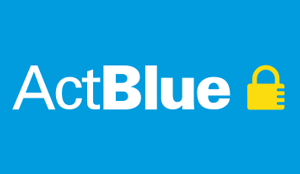 That isn't Florida! It's the Dakota Grassland Conservation Area
That isn't Florida! It's the Dakota Grassland Conservation Areaproposed by the U.S. Fish and Wildlife Service. It's bigger than Florida.
Don't worry: USFWS isn't kicking us all out of East River. They plan to pay landowners not to tear up native prairie. USFWS estimates that over half of this untilled ground will be developed for farming or housing or some other use over the next 34 years. Such development would seriously degrade what USFWS calls "the backbone of North America’s 'duck factory' and critical habitat for many wetland- and grassland-dependent migratory birds."
To protect this habitat, Fish & Wildlife would buy conservation easements. Landowners keep their property rights and control over public access. Farmers can still farm the wetlands during naturally dry years and graze and hay the grasslands. The land stays on the tax rolls, so local governments don't lose out on revenue. On the budget side, this federal spending appears deficit-neutral: the money comes primarily "from oil and gas leases on the outer continental shelf, excess motorboat fuel tax revenues, and sale of surplus Federal property."
USFWS is hosting three public meetings next week across the Prairie Pothole Region to talk about the plan and gets folks' input:
- December 14, 2010: Minot, ND, 7 p.m.–9 p.m. Sleep Inn–Inn and Suites, 2400 10th Street SW
- December 15, 2010: Jamestown, ND, 7 p.m.–9 p.m. Gladstone Inn and Suites, 111 2nd Street NE
- December 16, 2010: Huron, SD, 7 p.m.–9 p.m. Crossroads Hotel, 100 4th Street SW






 This blog printed on 100% recycled electrons.
This blog printed on 100% recycled electrons.


Looks like another Federal land grab to me.
ReplyDeleteRead again: they're not grabbing it. They're paying farmers who sign voluntary easements. No eminent domain here, unlike the TransCanada pipelines.
ReplyDeleteYeah, its a choice and a mouse has a choice not to eat the cheese in the mousetrap. Lets hope SD landowners consider ALL the consequences of this, and read any fine print very carefully.
ReplyDeleteNo. Bull, Todd (last name?). Read the post, read the info from USFWS. There is nothing that suggests any landowner will in any way be forced to sign an easement under this program. It is voluntary, plain and simple. Evidence to the contrary is welcome.
ReplyDeleteThis is about critical habitat. Duck stamps are part of the history. Expect support from a broad coalition.
ReplyDeleteSouth Dakota and local rural communities should embrace this with open arms as it infuses dollars into rural communities and provides infrastructure for supporting the pheasant hunting industry (nesting and winter cover) as well.
ReplyDeleteI know it is voluntary, so is taking the cheese from a mouse trap. I'm just saying landowners should be careful if they are signing one of those "forever" contracts.
ReplyDeleteMr. Gray (thank you for the name!), stop trying to hint this is some big bad government trick. It's a business arrangement. Like any other contract, yes, you should pay attention to the conditions so you know exactly what you are expected to do to fulfill your side of the bargain. But I'm with Mr. Kelley: this plan is good for everyone. It's market-based environmentalism at its best.
ReplyDelete